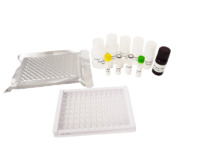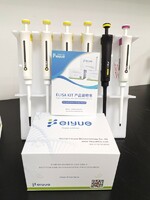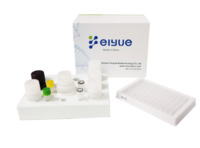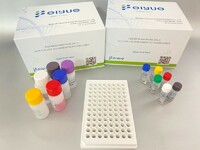Bovine Cystatin C (CST3/Cys-C) ELISA Kit
Product Quick Detail
- Minimum Order
- 1
- FOB Price
- USD $400.00 / Piece
- Place Of Origin
- China
- Packaging
- N/A
- Delivery
- 15 Days
Specifications
Cys-C(Cystatin C) Introduction
Cystatin C or cystatin 3 (formerly gamma trace, post-gamma-globulin, or neuroendocrine basic polypeptide),a protein encoded by the CST3 gene, is mainly used as a biomarker of kidney function. Recently, it has been studied for its role in predicting new-onset or deteriorating cardiovascular disease. It also seems to play a role in brain disorders involving amyloid (a specific type of protein deposition), such as Alzheimer\'s disease. In humans, all cells with a nucleus (cell core containing the DNA) produce cystatin C as a chain of 120 amino acids. It is found in virtually all tissues and body fluids. It is a potent inhibitor of lysosomal proteinases (enzymes from a special subunit of the cell that break down proteins) and probably one of the most important extracellular inhibitors of cysteine proteases (it prevents the breakdown of proteins outside the cell by a specific type of protein degrading enzymes). Cystatin C belongs to the type 2 cystatin gene family.
Bovine Cys-C(Cystatin C) ELISA Kit Test method
This ELISA kit uses the Sandwich-ELISA principle. The micro plate provided in this kit has been pre-coated with an antibody specific to Bovine CST3/Cys-C. Standards or samples and Horseradish Peroxidase (HRP) labeled detection antibody specific for Bovine CST3/Cys-C are added to the plate wells together and incubated. After washing off unbound material, TMB substrate solution is added to all wells and incubated. An enzyme-catalyzed reaction generates a blue color in the solution, thereafter, stop solution is added to stop the substrate reaction and the color turns yellow. The yellow solution is read at a wavelength of 450nm. The concentration of Bovine CST3/Cys-C in the samples is then calculated from the OD value by establishing a standard curve.
Cystatin C or cystatin 3 (formerly gamma trace, post-gamma-globulin, or neuroendocrine basic polypeptide),a protein encoded by the CST3 gene, is mainly used as a biomarker of kidney function. Recently, it has been studied for its role in predicting new-onset or deteriorating cardiovascular disease. It also seems to play a role in brain disorders involving amyloid (a specific type of protein deposition), such as Alzheimer\'s disease. In humans, all cells with a nucleus (cell core containing the DNA) produce cystatin C as a chain of 120 amino acids. It is found in virtually all tissues and body fluids. It is a potent inhibitor of lysosomal proteinases (enzymes from a special subunit of the cell that break down proteins) and probably one of the most important extracellular inhibitors of cysteine proteases (it prevents the breakdown of proteins outside the cell by a specific type of protein degrading enzymes). Cystatin C belongs to the type 2 cystatin gene family.
Bovine Cys-C(Cystatin C) ELISA Kit Test method
This ELISA kit uses the Sandwich-ELISA principle. The micro plate provided in this kit has been pre-coated with an antibody specific to Bovine CST3/Cys-C. Standards or samples and Horseradish Peroxidase (HRP) labeled detection antibody specific for Bovine CST3/Cys-C are added to the plate wells together and incubated. After washing off unbound material, TMB substrate solution is added to all wells and incubated. An enzyme-catalyzed reaction generates a blue color in the solution, thereafter, stop solution is added to stop the substrate reaction and the color turns yellow. The yellow solution is read at a wavelength of 450nm. The concentration of Bovine CST3/Cys-C in the samples is then calculated from the OD value by establishing a standard curve.
- Contact: lottie Shi










